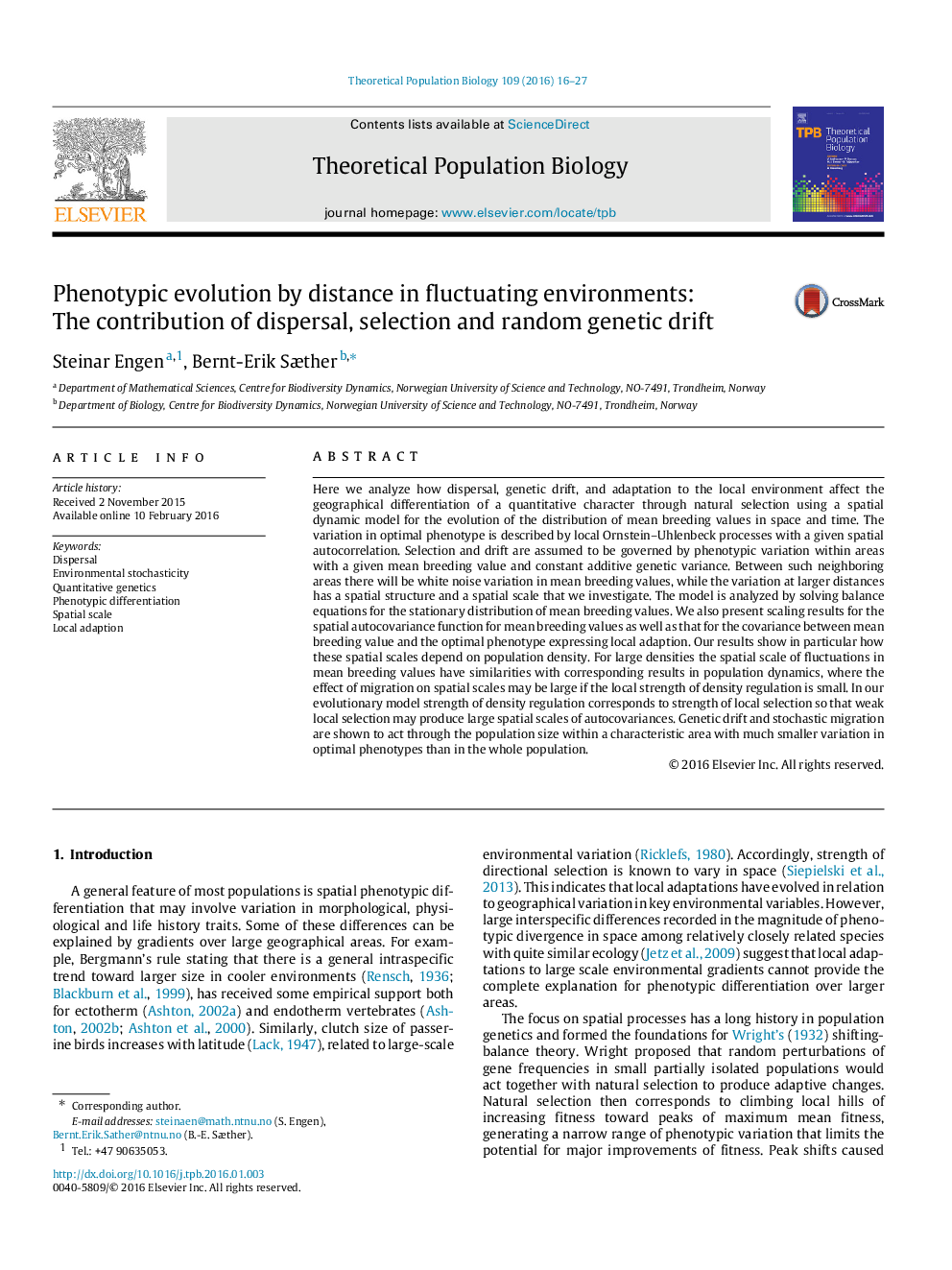| کد مقاله | کد نشریه | سال انتشار | مقاله انگلیسی | نسخه تمام متن |
|---|---|---|---|---|
| 4502270 | 1624143 | 2016 | 12 صفحه PDF | دانلود رایگان |
Here we analyze how dispersal, genetic drift, and adaptation to the local environment affect the geographical differentiation of a quantitative character through natural selection using a spatial dynamic model for the evolution of the distribution of mean breeding values in space and time. The variation in optimal phenotype is described by local Ornstein–Uhlenbeck processes with a given spatial autocorrelation. Selection and drift are assumed to be governed by phenotypic variation within areas with a given mean breeding value and constant additive genetic variance. Between such neighboring areas there will be white noise variation in mean breeding values, while the variation at larger distances has a spatial structure and a spatial scale that we investigate. The model is analyzed by solving balance equations for the stationary distribution of mean breeding values. We also present scaling results for the spatial autocovariance function for mean breeding values as well as that for the covariance between mean breeding value and the optimal phenotype expressing local adaption. Our results show in particular how these spatial scales depend on population density. For large densities the spatial scale of fluctuations in mean breeding values have similarities with corresponding results in population dynamics, where the effect of migration on spatial scales may be large if the local strength of density regulation is small. In our evolutionary model strength of density regulation corresponds to strength of local selection so that weak local selection may produce large spatial scales of autocovariances. Genetic drift and stochastic migration are shown to act through the population size within a characteristic area with much smaller variation in optimal phenotypes than in the whole population.
Journal: Theoretical Population Biology - Volume 109, June 2016, Pages 16–27
